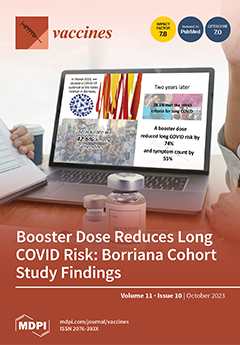Two respiratory syncytial virus (RSV) vaccines (AREXVY
® and ABRYSVO
®) were recently approved for older adults in the US. This study aimed to evaluate the cost-effectiveness of AREXVY
® and ABRYSVO
® from the Hong Kong public healthcare provider’s perspective. A
[...] Read more.
Two respiratory syncytial virus (RSV) vaccines (AREXVY
® and ABRYSVO
®) were recently approved for older adults in the US. This study aimed to evaluate the cost-effectiveness of AREXVY
® and ABRYSVO
® from the Hong Kong public healthcare provider’s perspective. A two-year decision-analytical model was developed to examine the outcomes of a single RSV vaccination (AREXVY
® or ABRYSVO
®) compared to no vaccination. Primary outcomes included RSV-related health outcomes, direct medical costs, quality-adjusted life-year (QALY) loss, and incremental cost per QALY (ICER). RSV vaccines are not yet marketed in Hong Kong, base-case analysis, therefore, benchmarked US RSV vaccine prices at 4 levels (25%, 50%, 75%, 100%). AREXVY
® and ABRYSVO
® (versus no vaccination) gained 0.000568 QALY and 0.000647 QALY, respectively. ICERs of ABRYSVO
® (26,209 USD/QALY) and AREXVY
® (47,485 USD/QALY) were lower than the willingness-to-pay threshold (49,594 USD/QALY) at 25% US vaccine price. The RSV attack rate was a common influential factor at all vaccine price levels. The probabilities of AREXVY
® and ABRYSVO
® to be most cost-effective were 0.10% and 97.68%, respectively, at 25% US vaccine price. Single vaccination of ABRYSVO
® or AREXVY
® for older adults appears to gain QALYs over 2 years in Hong Kong. The cost-effectiveness of AREXVY
® and ABRYSVO
® is subject to vaccine price and RSV attack rate.
Full article






